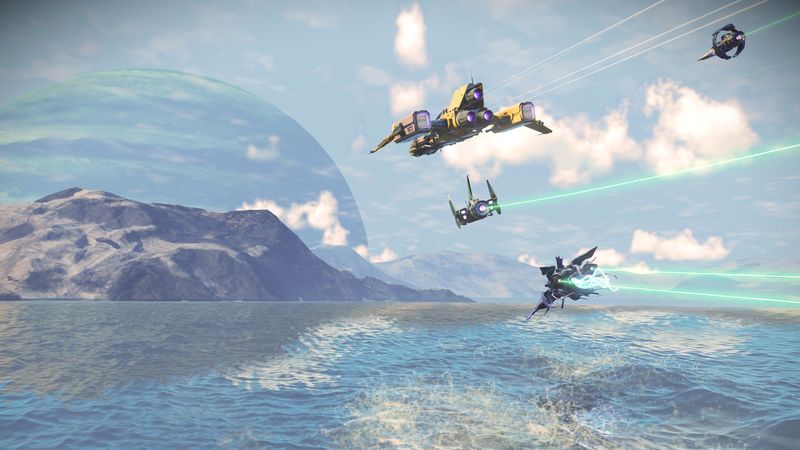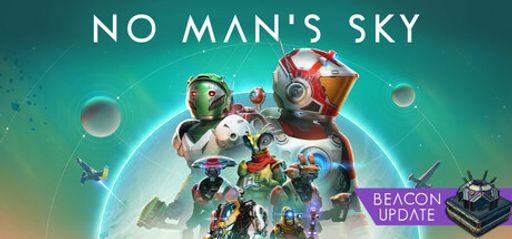I’ve charted countless star systems, tracked hidden relics, and faced hostile sentinel drones. No Man’s Sky is a bold statement of exploration, survival, and discovery on a cosmic scale. Here’s my take on this evolving universe, where Hello Games turned an unfinished promise into one of the most compelling open-world experiences in years.
Overall Impressions
From the moment I slipped into my rusty starship and watched a foreign sun crest an alien horizon, I knew No Man’s Sky offered something special. What stood out most was the sheer scope. The game’s universe is effectively infinite, with billions of procedurally generated planets waiting to be explored. It delivers on the fantasy of being an interstellar explorer.
That said, early versions felt sparse on story and depth. This frustrated players who wanted structured missions or deeper character arcs. However, Hello Games steadily improved the narrative with free updates. These brought multiplayer, base-building, story expansions, and more. Compared to other sci-fi sandboxes, No Man’s Sky now stands alongside Elite: Dangerous and Starfield, thanks to its unique blend of creativity and an ever-growing content library.
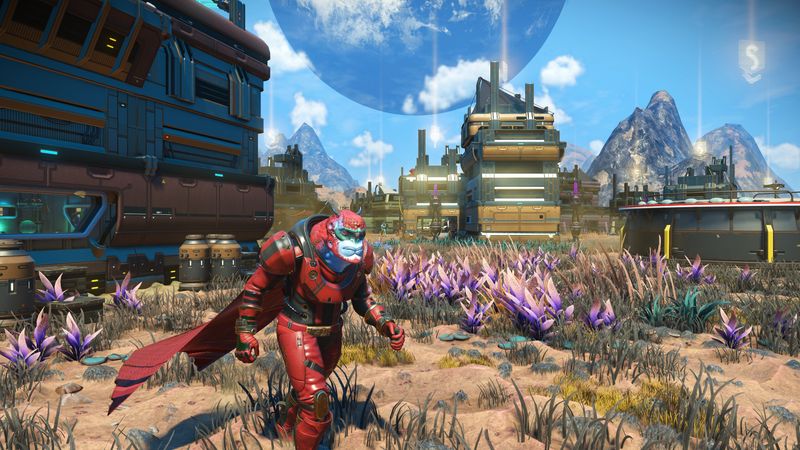
Gameplay Mechanics
Exploration and discovery drive the experience. Planets brim with unique flora, fauna, and resources to scan and uncover. Lore systems and blueprints make observation meaningful. Meanwhile, base-building and starship customization fuel creativity, from small settlements to massive orbital stations. Upgrades and modifications feel earned, adding depth to progression.
In addition, quality-of-life improvements have reshaped the game. Inventory management is smoother, waypoint systems more reliable, and travel faster. These changes transform long journeys into enjoyable adventures.
However, combat still lags behind. Encounters with sentinels and space pirates lack variety, making the loop repetitive. The overarching narrative adds direction but misses the emotional weight of story-driven titles. Yet standout discoveries remain magical. Stumbling across a crystalline moon that sings when scanned is unforgettable. These moments explain why players keep returning, even when systems fall short.
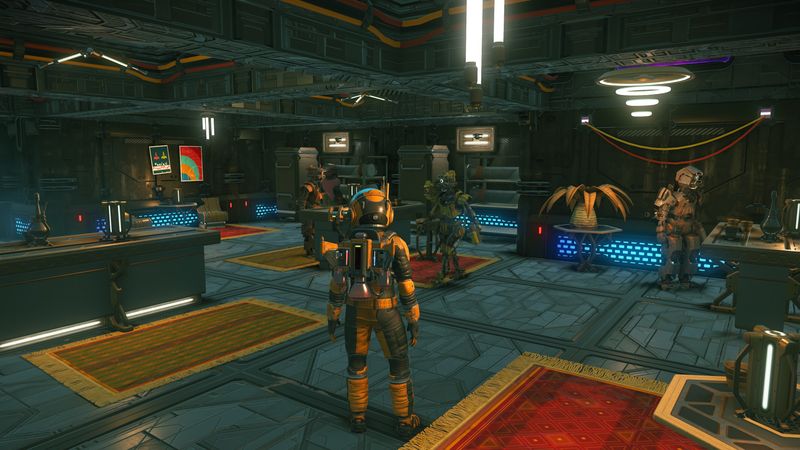
Story and Characters
No Man’s Sky doesn’t rely on named heroes or branching dialogue trees. Instead, story comes through exploration logs, abandoned structures, and alien monoliths. Expansions like Atlas Rises, Beyond, Origins, and Sentinel added more structured beats with new factions and goals.
While you won’t find a deep cast of voiced companions, the world-building keeps me invested. I’ve pieced together the tragedy of the Atlas, hunted Vy’keen relics, and even chatted with distant travelers. If you crave scripted characters, you may feel a gap. But if cryptic lore and shaping your own path appeal, the game delivers.
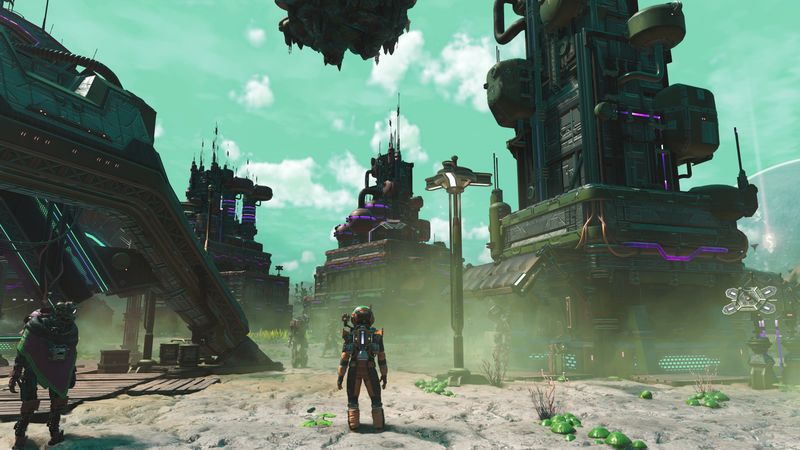
Visuals and Graphics
The art style is a vibrant mix of pastel skies, neon fungal forests, and rugged mountain ranges. Procedural generation sometimes creates odd terrain or surreal creatures. I once saw a bug-golfer hybrid and a planet with floating archways. Yet this strangeness adds wonder.
Performance is solid on PC and new consoles. Older hardware can show pop-ins during fast travel. Still, shader work on water and atmospheric effects shines during low sun or storms. Each vista feels cinematic, making every planet discovery meaningful.
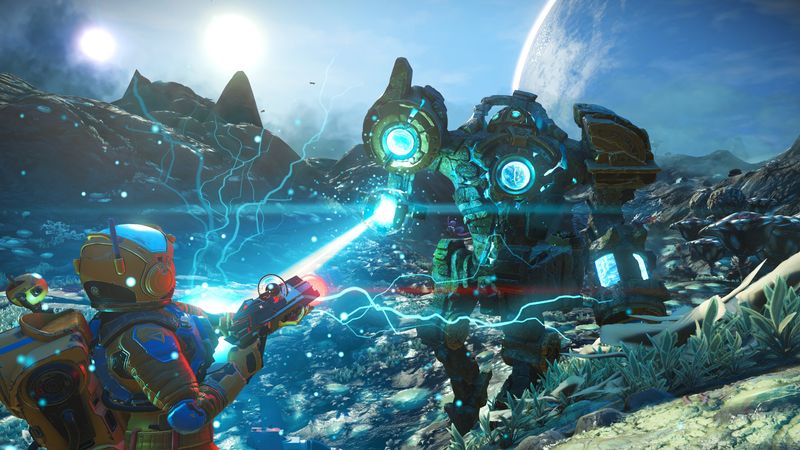
Sound and Music
Composer 65daysofstatic provides the soul of the adventure. Ethereal guitar strains and cinematic pulses rise and fall with your journey. Whether skimming plains or hurtling through wormholes, the score adapts beautifully.
Sound design is equally strong. The hum of your multi-tool, sentinel warnings, and thruster roars feel responsive. Voice snippets from alien traders and calm AI announcements add flavor without distraction. Overall, audio perfectly complements the sense of isolation and discovery.
Difficulty and Replayability
Difficulty scales to your preference. You can relax with exploration and base-building, or raise survival settings to limit resources and increase hazards. I’ve tried both ends. In survival mode, toxic rains and scarce life support create real tension.
Replay value is immense. Each planet is different, each starship unique. Moreover, community-driven events and free updates ensure fresh content. Nearly a decade after launch, players still praise Hello Games for its dedication. One user wrote, “From how this game started to where it’s at now is nothing short of incredible.” I agree. Revisiting old systems in search of hidden features shows the game’s lasting appeal.
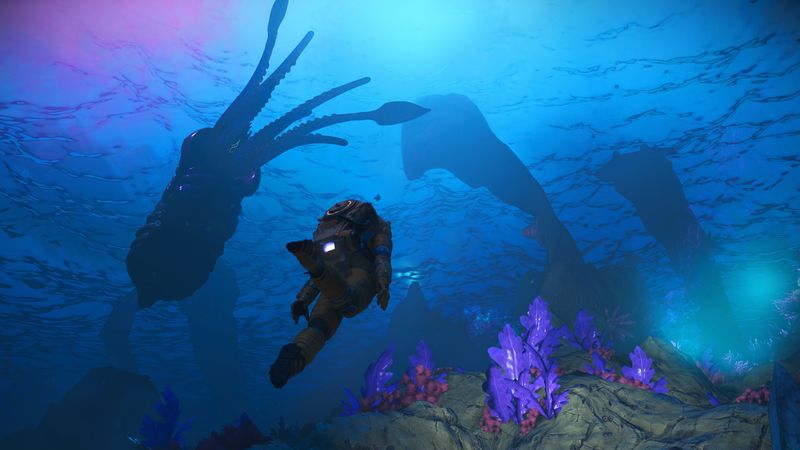
Behind the Scenes Trivia
No Man’s Sky is one of gaming’s greatest comeback stories. It launched with fewer than a dozen developers. The release faced heavy criticism, yet years of updates earned glowing reviews.
Since 2016, expansions like Atlas Rises, NEXT, Beyond, Origins, and Sentinel have all been free. No paid DLC was ever added. Sean Murray’s apology and commitment to ongoing updates set a new standard for community-first development.

Final Thoughts
No Man’s Sky proves the power of evolution in game development. From a rocky debut, it became one of the richest exploration titles available. Its strengths lie in creativity, stunning audiovisuals, and an ever-expanding universe that rewards curiosity.
Some players still want deeper combat or more character-driven stories. However, the freedom and breadth of content far outweigh these shortcomings.
Rating: 4.5 out of 5 stars
If you cherish uncharted worlds, creative building, and a living universe that keeps growing, this game is unforgettable. I’m already plotting my next expedition—and I can’t wait to see what Hello Games adds next.
